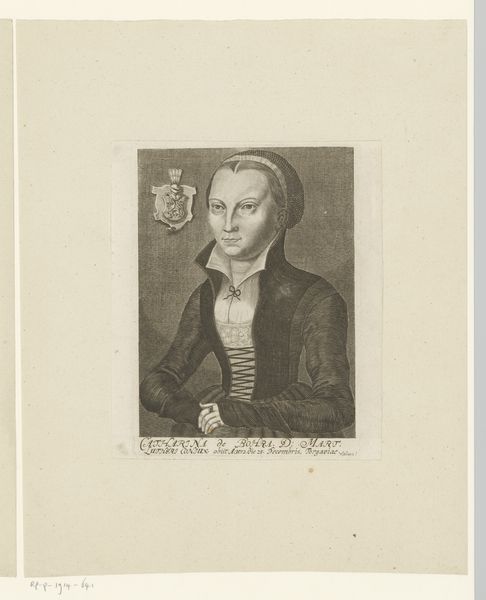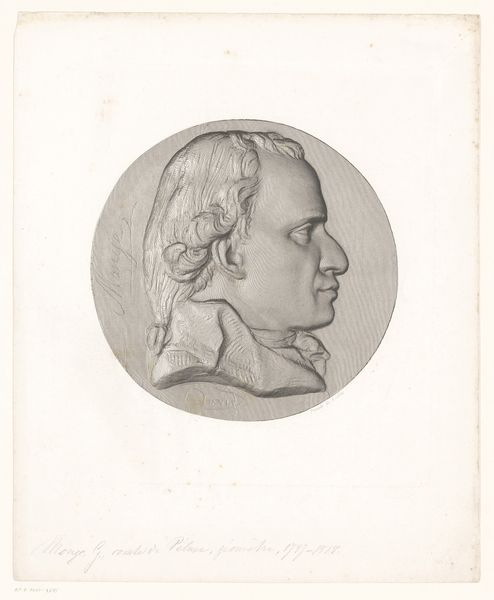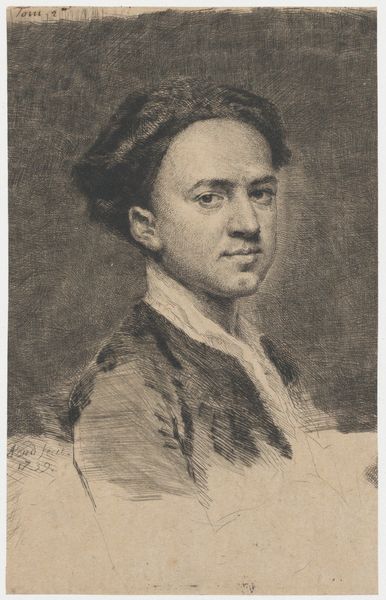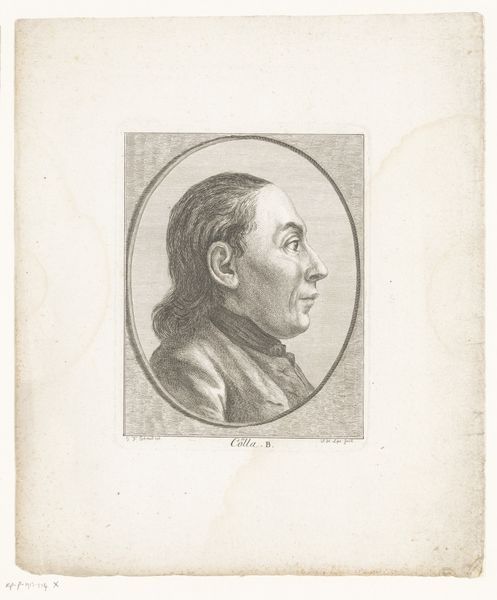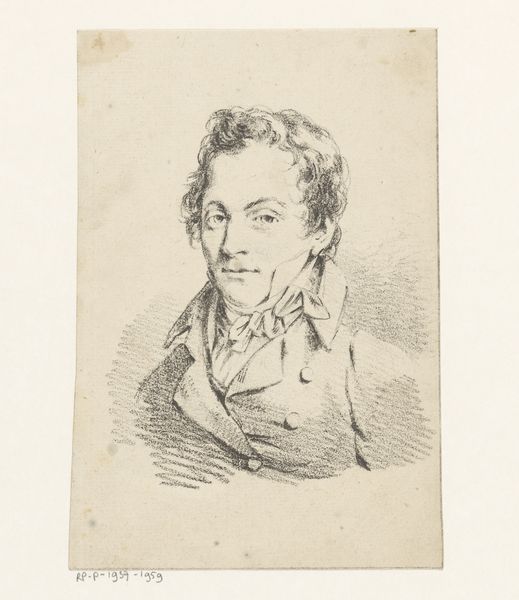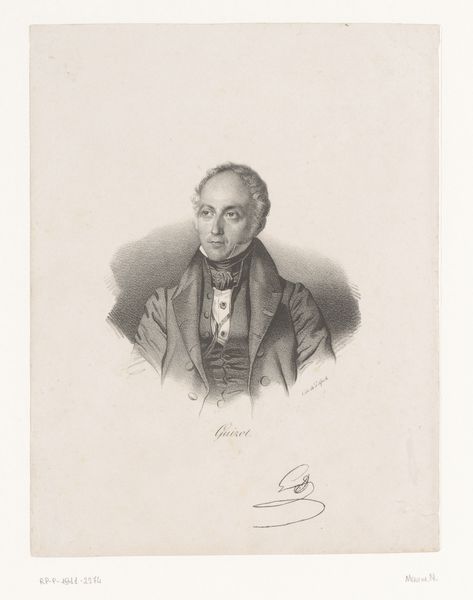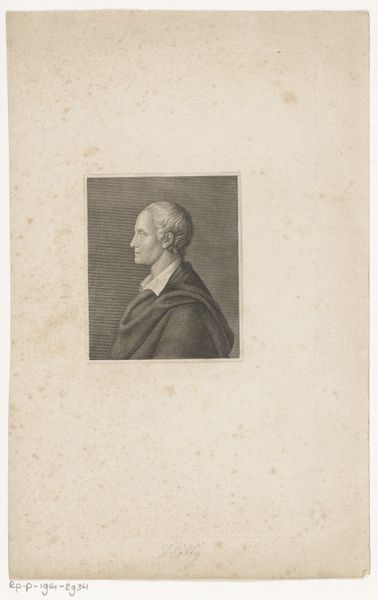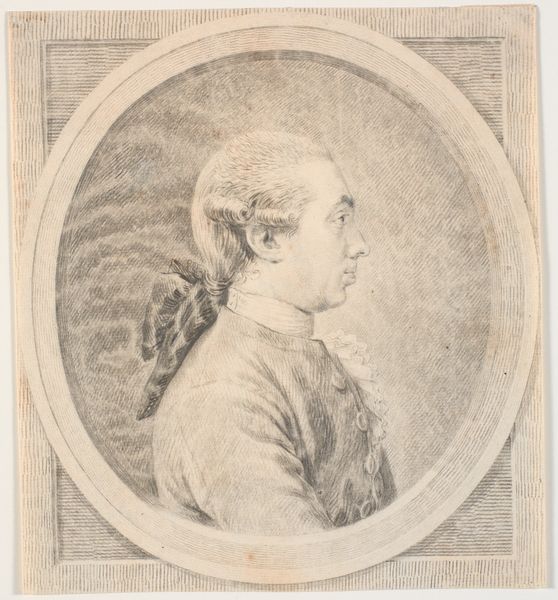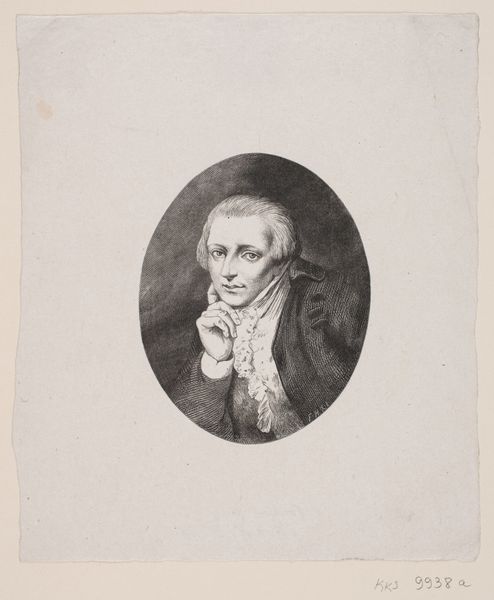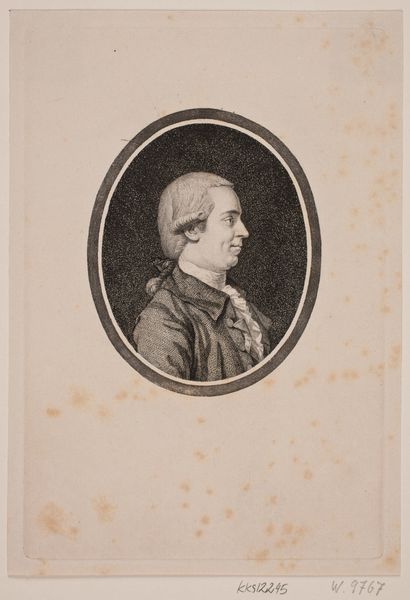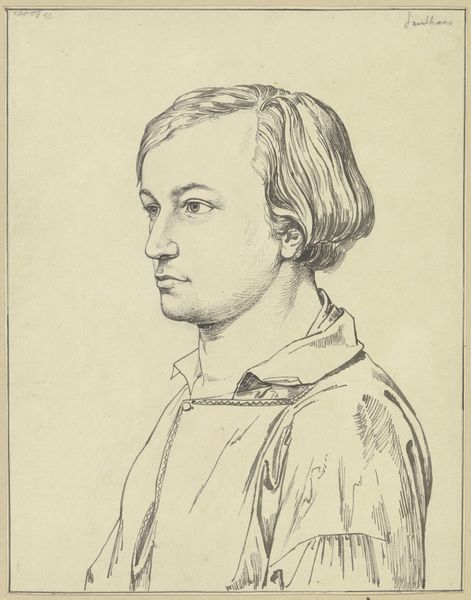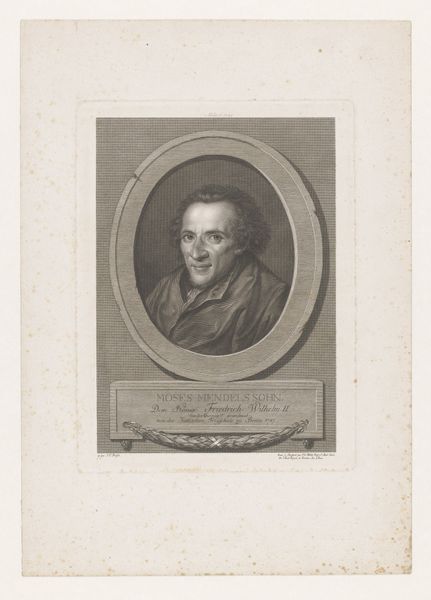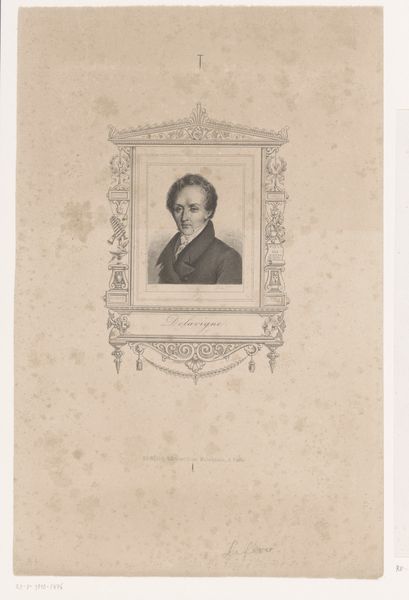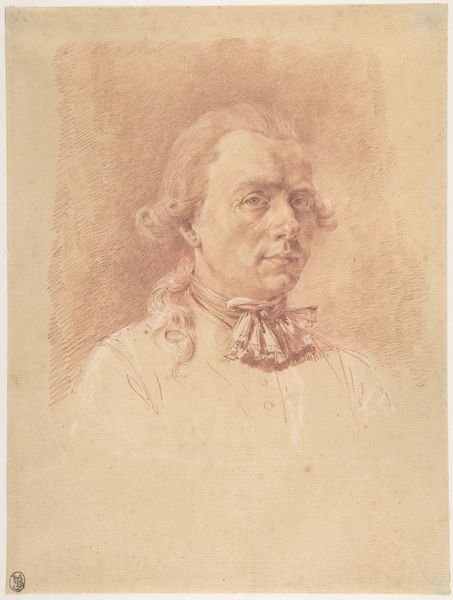
Dimensions: height 157 mm, width 107 mm
Copyright: Rijks Museum: Open Domain
Jean-Pierre Norblin de la Gourdaine made this self-portrait using etching, a printmaking process that relies on acid to ‘bite’ lines into a metal plate. Look closely, and you can see the delicate web of engraved lines that create tone and shadow. The artist would have first coated a copper plate with a waxy, acid-resistant ground. He then scratched an image into the ground with a needle, exposing the metal. Next, the plate was submerged in acid, which etched away the exposed lines. The longer it was left in the acid, the deeper the lines. Finally, ink was applied to the plate, wiped off the surface, and then printed onto paper. Etching was a highly skilled craft, demanding precision and control over the materials. The resulting prints, like this self-portrait, allowed for the relatively inexpensive reproduction and dissemination of images, tying artistic skill with a burgeoning system of mass production. So while Norblin de la Gourdaine’s work reflects a deeply personal vision, it also participates in the wider social and economic context of its time.
Comments
No comments
Be the first to comment and join the conversation on the ultimate creative platform.
